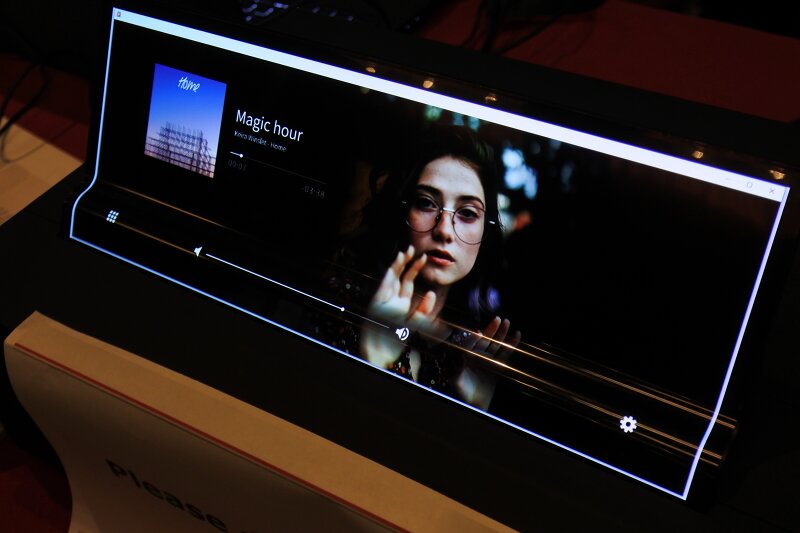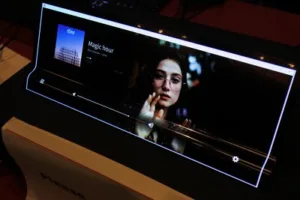At the exhibits of the 2019 Vehicle Displays and Interfaces Symposium, held September 24 to 25 at the Burton Manor Conference Center in Livonia, Michigan, I saw only one automotive OLED display on the show floor.

Steve Vrablik of Japan Display (JDI), a leading supplier of automotive displays, explained it succinctly in a one-on-one conversation in the back of a conference room. “OLED is not gaining traction in automotive displays” for three main reasons:
- cost
- lifetime, and
- luminance.
With the steadily improving performance of LCDs, the only reason to choose an OLED is flexibility. And even there, flexible LCDs for gentle bends are becoming available, and some vendors can fill the space between a flat LCD and a curved front cover glass to give the impression of a gently curved display. Vrablik concluded by saying “If you don’t need curvature, there is no motivation to use OLED.”
There are new high-performing alternatives to OLED in automotive just as there are in consumer electronics. At the BOE Varitronix booth I was surprised to see a dual-cell automotive display concept. The surprise was at the quickness with which BOE’s automotive division had performed the automotive qualification. It shouldn’t have been a surprise that the technology would eventually work its way from parent company BOE’s television-sized dual-cell panel to the automotive side. We saw this kind of transition last year, when Harman Samsung showed local-area-dimming quantum-dot displays qualified for automotive applicaitons.
AUO showed a 12.3-inch curved LCD with LTPS backplance and in-cell touch for an instrument cluster display. The 1920×720 displays had a 500 mm radius curvature. The display was convex.
It was Sharp that had the only OLED I saw on the show floor (see photo). The 12.3-inch, 1920×720 display used an IGZO backplane, and the OLED emission materials were applied via evaporation. Sharp said that they intend to use external compensation “to improve luminance variation.”
 The only OLED display I saw on the show floor was this 12.3-inch technology demonstrator from Sharp. (Photo: Ken Werner)
The only OLED display I saw on the show floor was this 12.3-inch technology demonstrator from Sharp. (Photo: Ken Werner)
And PlayNitride and Kyocera even showed microLED technology demonstrators.
This is only the tip of the large iceberg that was this year’s Vehicle Displays and Interfaces Symposium. For a more complete report of the symposium and exhibition, please see the November/December issue of Information Display Magazine. (KW)
Ken Werner is Principal of Nutmeg Consultants, specializing in the display industry, manufacturing, technology, and applications, including mobile devices, automotive, and television. He consults for attorneys, investment analysts, and companies re-positioning themselves within the display industry or using displays in their products. He is the 2017 recipient of the Society for Information Display’s Lewis and Beatrice Winner Award. You can reach him at [email protected] or www.nutmegconsultants.com.

